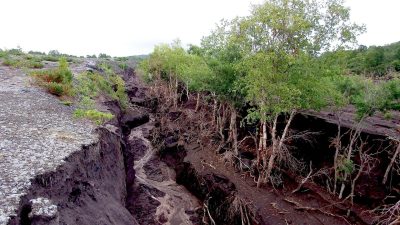How the 1918 Shantou Earthquake Changed Everything
The 1918 Shantou Earthquake had a profound and lasting impact on the region. As one of the most devastating earthquakes in China’s history, it not only caused widespread destruction but also changed the trajectory of earthquake preparedness and response in the country. The quake, which struck on 16 December 1918, measured 7.7 on the Richter scale and left behind a trail of devastation in Shantou and surrounding areas.
This earthquake exposed the inadequacies of China’s infrastructure and disaster management systems at the time. The extent of the damage was overwhelming, with entire buildings reduced to rubble, and the economy severely disrupted. It was a wake-up call for the nation, showing that many cities along China’s eastern coastline were vulnerable to seismic activity. The long-term effects of the quake forced China to rethink its approach to disaster response, especially in areas prone to natural disasters like earthquakes.
The Untold Truth Behind the 1918 Shantou Earthquake Disaster
While the 1918 Shantou Earthquake is often remembered for the immediate destruction it caused, there are many untold truths that are rarely discussed. The government’s response to the disaster was slow and insufficient, which contributed to the high death toll. Despite the severity of the quake, the authorities were not fully prepared to handle the aftermath, which led to a delayed and disorganised recovery effort.
In addition to the immediate loss of life, the earthquake had far-reaching effects on the local economy. Agriculture, a primary source of livelihood for many people in the affected region, was severely impacted, leaving farmers without crops and income. The social fabric of Shantou also suffered as many families were displaced, and communities were torn apart by the disaster. The government’s failure to act swiftly exacerbated the human cost of the catastrophe, making it clear that reforms were desperately needed in China’s disaster response infrastructure.
Shattering Lives: The Hidden Consequences of the 1918 Shantou Earthquake
- The Psychological Toll on Survivors: The emotional trauma of surviving a devastating earthquake is often overlooked, but it is an enduring consequence. Many survivors of the 1918 Shantou Earthquake experienced long-term psychological issues, including anxiety, post-traumatic stress disorder (PTSD), and a sense of hopelessness. The fear of future quakes lingered for years, with many people unable to return to normal life.
- Impact on Local Communities: Entire villages were wiped out, leaving people without homes and basic services. The destruction of local infrastructure meant that families could not access essential services, such as healthcare and education. In many cases, entire generations were left without the support systems they needed to rebuild their lives.
- Social and Economic Struggles Post-Earthquake: The recovery from the 1918 earthquake was slow and painful. With a weakened economy and a fragmented social structure, the survivors faced immense challenges. The collapse of local businesses, loss of livelihood, and breakdown of social networks created an environment of despair that would take years to overcome.
The Aftermath of the 1918 Shantou Earthquake: Is Our Response Enough?
Despite the significant loss and devastation, the aftermath of the 1918 Shantou Earthquake prompted many to question whether China’s disaster response was adequate. In the immediate aftermath, there was a lack of clear strategy for managing the rebuilding process. Aid was slow to arrive, and the local government struggled to coordinate rescue and relief efforts effectively.
Looking back, it is clear that China’s preparedness for such a disaster was insufficient. The country lacked a cohesive disaster response plan, and the focus on recovery was often distracted by political and administrative challenges. Today, while China has made considerable improvements in earthquake preparedness, the 1918 Shantou Earthquake serves as a stark reminder that effective disaster management requires foresight, investment, and coordination at all levels of government.
A Wake-Up Call: What We Missed About the 1918 Shantou Earthquake
The 1918 Shantou Earthquake should have served as a wake-up call to improve China’s seismic preparedness, but many key lessons were overlooked. One of the most significant missed opportunities was the failure to recognise the vulnerability of the eastern coastal regions, which were prone to earthquakes. Had authorities paid more attention to the region’s seismic risks, better infrastructure could have been built to withstand the forces of nature.
Another critical lesson was the failure to invest in early warning systems. While modern technology has improved earthquake forecasting, in 1918, there was little to no warning of impending tremors, making it impossible to evacuate and save lives in time. Today, countries around the world are using seismic data to predict earthquakes, but the 1918 Shantou Earthquake highlights the dangers of complacency and the importance of ongoing investment in disaster risk reduction.
Could We Have Prevented the 1918 Shantou Earthquake? The Shocking Facts
- Natural Disasters vs. Human Preparedness: While the 1918 Shantou Earthquake was a natural event that could not have been prevented, human preparedness was woefully inadequate. Many of the buildings and homes in Shantou were not built to withstand the force of an earthquake, leading to far greater damage than necessary. Better urban planning and construction standards could have mitigated the impact of the quake.
- The Seismic Forecasting System of 1918 and Its Limitations: At the time of the earthquake, China lacked an effective seismic forecasting system. With no prior warning of the impending disaster, residents had no opportunity to evacuate, which resulted in thousands of lives lost. Modern forecasting technologies could have provided at least some warning, potentially saving lives.
- Why Future Earthquakes Could Be Just as Devastating: Although much has been done to improve China’s earthquake preparedness since 1918, future earthquakes could still be just as devastating. With rapid urbanisation and increasing population density in high-risk areas, China must continue to invest in seismic research, early warning systems, and resilient infrastructure to avoid repeating the mistakes of the past.
When Earthquake Strikes: How the 1918 Shantou Earthquake Revealed Our Vulnerabilities
The 1918 Shantou Earthquake revealed China’s vulnerabilities in numerous ways. The city of Shantou, despite being an important coastal hub, had inadequate infrastructure to withstand such a massive natural disaster. Buildings crumbled, bridges collapsed, and roads were rendered impassable. The lack of preparation made it clear that many of China’s coastal cities were vulnerable to earthquakes.
The event also exposed a significant gap in disaster preparedness across the country. There was no coordinated effort between local and national authorities, and the response was fragmented and inefficient. Today, China has made strides in addressing these vulnerabilities, but the 1918 earthquake remains a tragic example of what happens when a nation fails to anticipate and prepare for seismic risks.
Conclusion: The Lasting Impact of the 1918 Shantou Earthquake: A Reminder of Our Fragility
The 1918 Shantou Earthquake was a catastrophe that left lasting scars on the region. The destruction it caused, the loss of life, and the economic toll are still remembered today. However, the quake also provided valuable lessons on the importance of disaster preparedness, infrastructure resilience, and effective government response. As we move forward, it is essential to remember the lessons of the past and continue to build a safer, more prepared future.
5 Short FAQs:
- What caused the 1918 Shantou Earthquake?
- The earthquake was caused by seismic activity along the fault line beneath the South China Sea.
- How many people died in the 1918 Shantou Earthquake?
- Thousands of people perished, with estimates varying widely, but the death toll was devastating.
- How did the 1918 Shantou Earthquake impact China’s economy?
- The earthquake severely disrupted trade, agriculture, and local businesses, leaving the region struggling to recover economically.
- What measures were taken to rebuild after the 1918 earthquake?
- Reconstruction efforts focused on rebuilding homes, restoring vital infrastructure, and providing aid to the displaced population.
- Could a similar earthquake happen today?
- Yes, the region remains at risk, but modern technologies and preparedness efforts could reduce the impact of a future disaster.
References:
“1918 Shantou Earthquake”
https://en.wikipedia.org/wiki/1918_Shantou_earthquake
“A ‘Shocking’ Lunar New Year One Hundred Years Ago”
https://www.hko.gov.hk/en/Observatorys-Blog/101815/A-shocking-Lunar-New-Year-one-hundred-years-ago
“Street Damaged by an Earthquake, Shantou, China, 1918”
https://digital.library.yale.edu/catalog/16713722
“Intensity Distribution from the 1918 Mw 7.3 Shantou, China, Earthquake”
https://dr.ntu.edu.sg/bitstream/10356/179845/3/Abstract.pdf




